Monstera Borsigiana VS Monstera Deliciosa - Similarity & Difference
Written by Ivy
Jan 05 2023
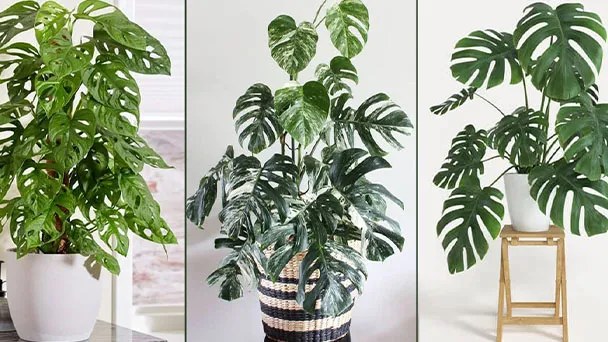
There are many similar plants that have caused disputes. Among them, Monstera Borsigiana and Monstera Deliciosa often cause debate, so that no one can determine whether they are two independent monstera species, or whether the former is a variant of the latter, or whether Monstera Borsigiana is just another name of Monstera Deliciosa!
Scientists have not yet determined whether there are any differences between monstera borsigiana and monstera deliciosa at the gene level. Therefore, we regard it as a variant of a species or its kinship. Monstera borsigiana and Monstera deliciosa share the same natural habitat, i.e. from southern Mexico to Panama. Let's take a look at the similarities and differences between monstera borsigiana and monstera deliciosa.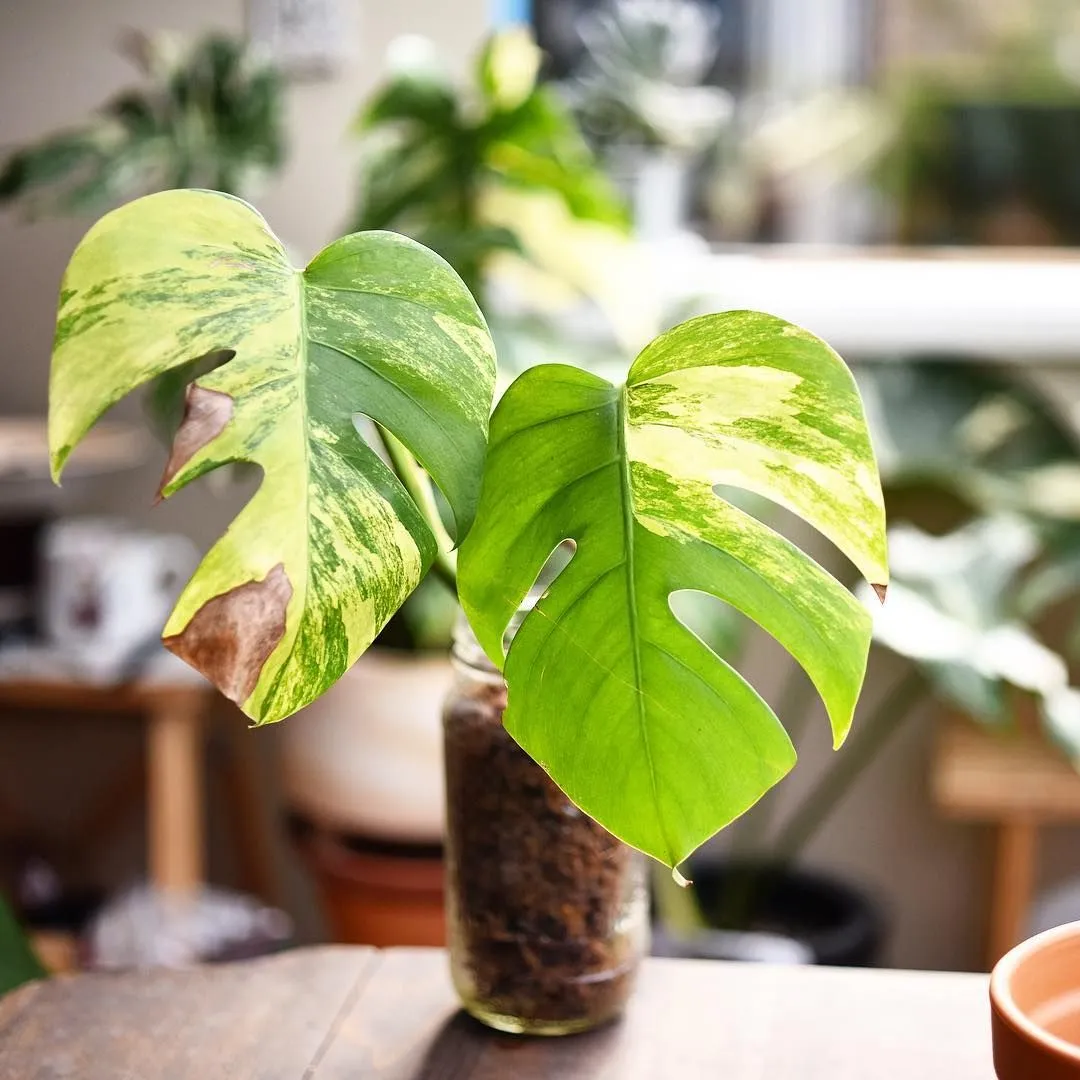
Borsigiana
Monstera deliciosa and monstera borsigiana are famous for their dark green leaves, which look like they were cut with scissors. Monstera deliciosa and Monstera borsigiana generally have heart-shaped leaves, although some may not be perfect heart-shaped. The number, size and appearance of these cuts may vary between blades. However, their shape is usually rectangular or semicircular.
This is because the roots and roots of vines are trying to get enough water. In addition, due to rainfall and wind pressure, Monstera produces perforated blade structure.
These openings allow rainwater to pass through and fall directly on the roots of the trees. They also provide some protection against wind damage to plants. The leaves with long holes are a prominent feature of monstera deliciosa and monstera borsigiana. But these changes will occur with the aging of plants. For some time, the leaves of Monstera borsigiana may look smaller and hardly trimmed.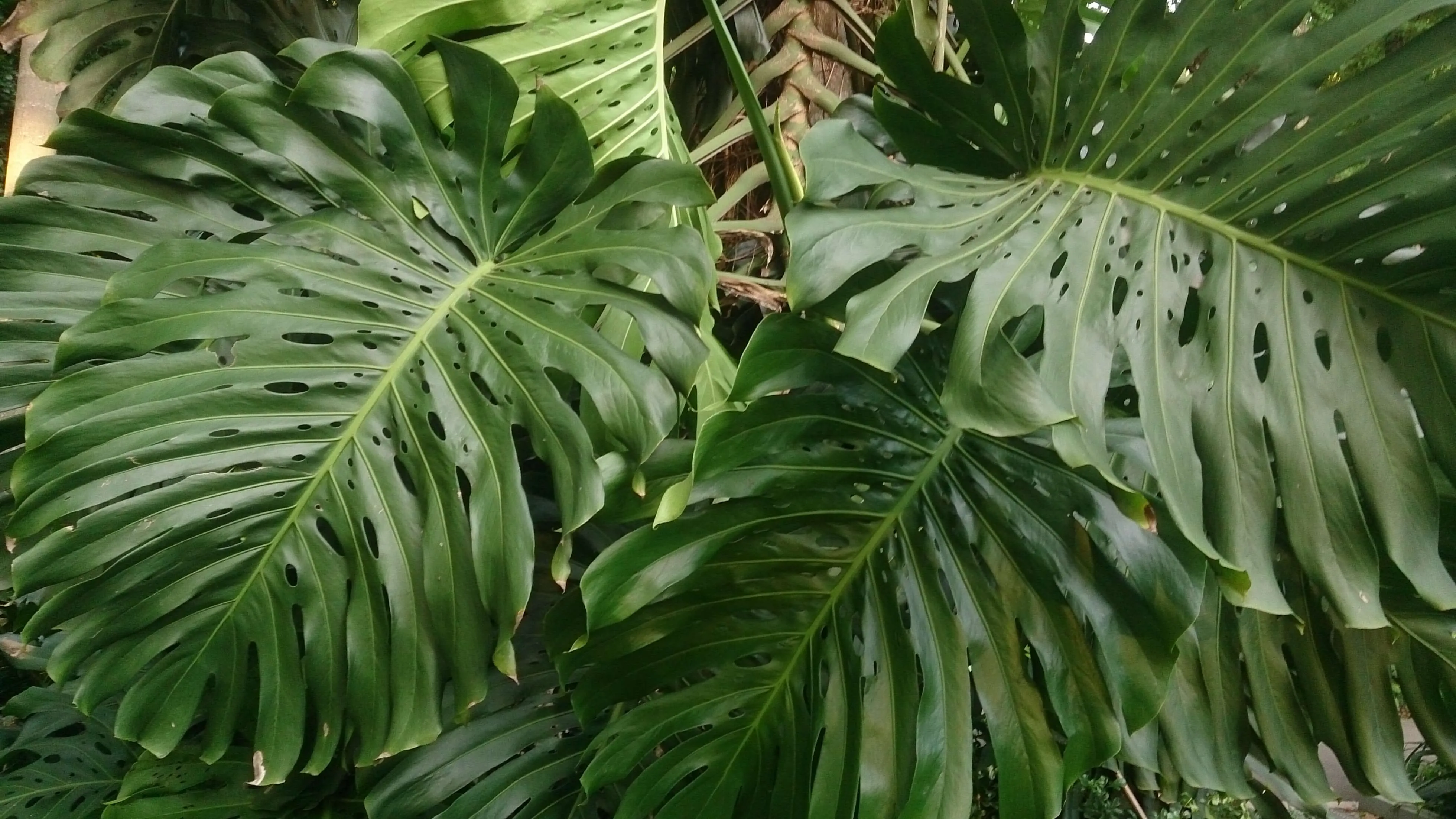
Deliciosa
Monstera deliciosa grows only 2 feet a year. While Monstera borsigiana can reach a mature state within a year. So if your plant grows very fast, it's monstera borsigiana. If your plant grows relatively slowly, it is monstera deliciosa.
Monstera deliciosa plants grow like vines in the initial growth stage. If your plant looks a little messy and has nested flower stems, it must be monstera deliciosa. On the other hand, if the plant grows clean without nesting with stems, it is monstera borsigiana.
Monstera Borsigiana is not sold as seed or tissue culture in Australia, so you can find it on the page of private growers or collectors. Due to the aerial rooting and easy reproduction of Monstera borsigiana, this relatively easy to obtain plant is very popular. However, the cost of the plant is determined by the amount that the seller and the buyer are willing to pay. Monstera borsigiana is still an expensive option and is usually sold as a cut rather than a whole plant.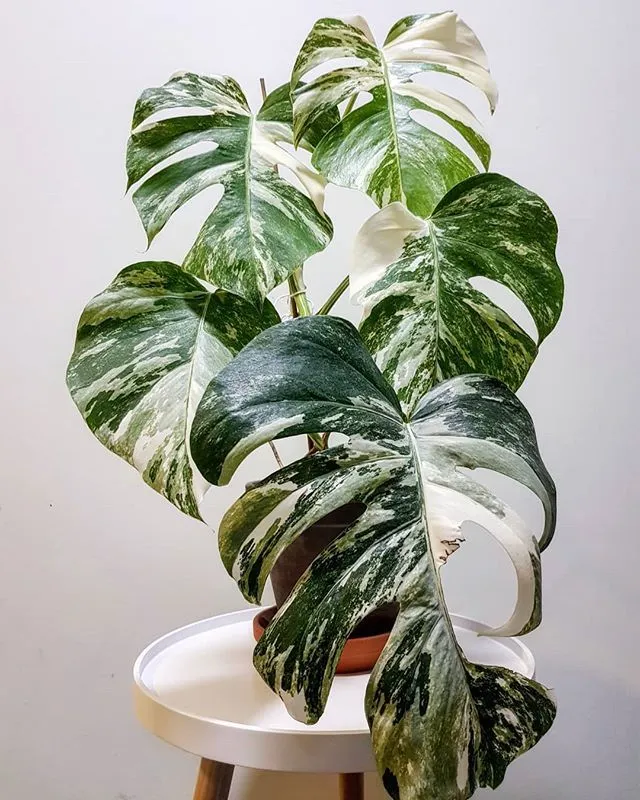
Borsigiana
Generally, Monstera is planted on the ground and grows gradually, revealing its aerial roots. Monstera, whether borsigiana or delicasa, uses its roots to move up like orchids. Borsigiana and deliciosa have strong roots and a wide range of uses, enough to attach to supporting structures such as trees, rocks and buildings. (Read More: Monstera Root Rot - Signs & How to Treat)
Air permeability and looseness are the primary requirements, which must be met by the soil. Otherwise, the soil is easy to agglomerate, and the roots are not easy to breathe, which hinders the growth of borsigiana and deliciosa. Therefore, the root must be loose and breathable. We can't use very sticky soil. Even slightly sticky soil will have an impact more or less. In addition, we can choose such soil without changing soil frequently.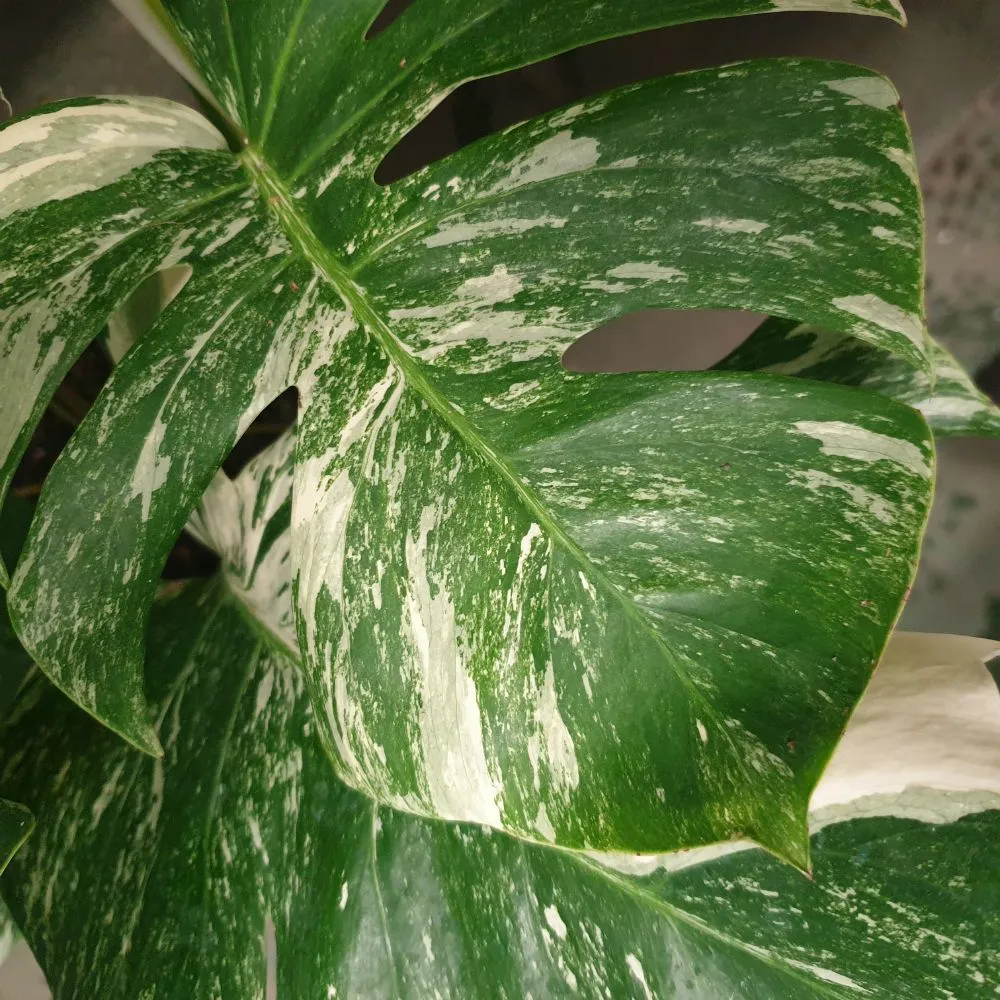
Deliciosa
Read More:
Scientists have not yet determined whether there are any differences between monstera borsigiana and monstera deliciosa at the gene level. Therefore, we regard it as a variant of a species or its kinship. Monstera borsigiana and Monstera deliciosa share the same natural habitat, i.e. from southern Mexico to Panama. Let's take a look at the similarities and differences between monstera borsigiana and monstera deliciosa.
Difference Bewteen Borsigiana & DeliciosaRuffling at the StemsLeaf Color & ShapeGrowth RatePriceSimilarity of Borsigiana & Deliciosa Root SystemToxicityGrowth Requirements
Difference Bewteen Borsigiana & Deliciosa

Borsigiana
Ruffling at the Stems
The best way to judge whether your favorite plant is monstera deliciosa or borsigiana is to check the top of mature leaves. At the intersection of stem and leaf, Monstera delicasa will have a ruffling that borsigiana does not have. However, we must wait to check the mature leaves, because Monstera deliciosa has no ruffling like borsigiana when it is not mature. (Read more about Monstera Deliciosa.)Leaf Color & Shape
The leaves of Monstera borsigiana are smaller when they are mature, and it is easier for Monstera borsigiana to grow similar varieties with different colors, and can maintain variegated colors during reproduction. Because it is easier to reproduce this plant with variegated integrity, this is a very popular way to reproduce Monstera borsigiana.Monstera deliciosa and monstera borsigiana are famous for their dark green leaves, which look like they were cut with scissors. Monstera deliciosa and Monstera borsigiana generally have heart-shaped leaves, although some may not be perfect heart-shaped. The number, size and appearance of these cuts may vary between blades. However, their shape is usually rectangular or semicircular.
This is because the roots and roots of vines are trying to get enough water. In addition, due to rainfall and wind pressure, Monstera produces perforated blade structure.
These openings allow rainwater to pass through and fall directly on the roots of the trees. They also provide some protection against wind damage to plants. The leaves with long holes are a prominent feature of monstera deliciosa and monstera borsigiana. But these changes will occur with the aging of plants. For some time, the leaves of Monstera borsigiana may look smaller and hardly trimmed.

Deliciosa
Growth Rate
Monstera borsigiana grows faster than monstera deliciosa, but monstera borsigiana is a short plant, while monstera deliciosa can grow to 9 feet tall. In most cases, these plants can reach their maximum height only in their place of origin. Monstera naturally grows in the forests of Mexico and Panama.Monstera deliciosa grows only 2 feet a year. While Monstera borsigiana can reach a mature state within a year. So if your plant grows very fast, it's monstera borsigiana. If your plant grows relatively slowly, it is monstera deliciosa.
Monstera deliciosa plants grow like vines in the initial growth stage. If your plant looks a little messy and has nested flower stems, it must be monstera deliciosa. On the other hand, if the plant grows clean without nesting with stems, it is monstera borsigiana.
Price
Monstera Deliciosa can be sold with a price ranging from $20 to $100 and Monstera Borsigiana can be sold with a price ranging from $100 to $1,000.Monstera Borsigiana is not sold as seed or tissue culture in Australia, so you can find it on the page of private growers or collectors. Due to the aerial rooting and easy reproduction of Monstera borsigiana, this relatively easy to obtain plant is very popular. However, the cost of the plant is determined by the amount that the seller and the buyer are willing to pay. Monstera borsigiana is still an expensive option and is usually sold as a cut rather than a whole plant.
Similarity of Borsigiana & Deliciosa

Borsigiana
Root System
Borsigiana and Deliciosa have the same root structure and similar leaf characteristics. They all produce a large number of aerial roots, also known as adventitious roots. Aerial rooting occurs above the growth medium or soil, either downward from the stem or upward from the primary root. Water absorption, nutrient absorption, air exchange and proliferation are all the processes of aerial rooting.Generally, Monstera is planted on the ground and grows gradually, revealing its aerial roots. Monstera, whether borsigiana or delicasa, uses its roots to move up like orchids. Borsigiana and deliciosa have strong roots and a wide range of uses, enough to attach to supporting structures such as trees, rocks and buildings. (Read More: Monstera Root Rot - Signs & How to Treat)
Toxicity
Like other Monstera plants, borsigiana and deliciosa are toxic. This means that no matter what kind of plant we keep, it is very important to keep borsigiana and delicious away from the curious hands and mouths of children, dogs, cats and other pets.Growth Requirements
Light Care
Monstera borsigiana and Monstera deliciosa do not have high requirements for light and are not suitable for breeding in places with sufficient light. Especially in summer, the light temperature is relatively strong. Once it is exposed to the sun, it is easy to yellow leaves. Therefore, in the period of strong light and temperature, we'd better put Monstera borsigiana and Monstera deliciosa in the astigmatism; If the light temperature is not very high and warm, you can move out and bask in the sun, which is conducive to enhancing the resistance of the plant and making the leaves greener. (Read More about saving yellow leaves of Monstera.)Soil Care
Borsigiana and deliciosa have high requirements for soil, which has a great impact on its growth. This is because borsigiana and deliciosa are parasitic, and their roots belong to "fleshy roots", so they are highly dependent on soil. Therefore, we should pay special attention when selecting basin soil.Air permeability and looseness are the primary requirements, which must be met by the soil. Otherwise, the soil is easy to agglomerate, and the roots are not easy to breathe, which hinders the growth of borsigiana and deliciosa. Therefore, the root must be loose and breathable. We can't use very sticky soil. Even slightly sticky soil will have an impact more or less. In addition, we can choose such soil without changing soil frequently.
Temperature Care
Since Monstera borsigiana and Monstera deliciosa belong to tropical plants, their suitable growth temperature is between 20 ℃ and 25 ℃. During winter maintenance, their minimum growth temperature can not be lower than 10 degrees, but some robust Monstera can tolerate 5 degrees for a short time, but if it is lower than 5 degrees for a long time, it will be prone to plant frostbite. In addition, when the temperature is above 32 degrees in summer, we need spray cooling for Monstera Borsigiana and Monstera Deliciosa.Humidity Care
Monstera borsigiana and Monstera deliciosa are native to the tropical rain forest area. The original environment is high temperature and humidity. Therefore, Monstera borsigiana and Monstera deliciosa like to be wet during growth and try to maintain a high humidity environment during maintenance to create such a maintenance environment. If we do not water for a long time, it will lead to basin soil drought, the root system can not absorb water, and there is not enough water to grow. In the long run, it will lead to yellow leaves and water shortage, affecting the normal growth.
Deliciosa
Watering Care
Both Monstera Borsigiana and Monstera Deliciosa like a humid growth environment. They need to be watered reasonably during maintenance. The climate is different in different seasons, so the watering frequency is different. We can water every 3-4 days in spring and autumn, and every day in late spring or early autumn. In summer, we can water every morning and evening. In winter, the temperature is low and the evaporation speed is slow, Therefore, water can be poured once in 5-7 days. Every time we water monstera borsigiana and monstera deliciosa, we should control the amount of water. We can't water too much to cause ponding. In addition to normal root watering, we also spray water mist in dry summer.Repotting Care
- Pot removal: the best time for Monstera borsigiana and Monstera deliciosa is from March to April in the spring. The temperature is relatively warm and the air humidity is large. It can be adapted quickly after changing the pot. Long term failure to change the pot will lead to the adhesion between the soil and the inner wall of the pot. It is difficult to remove the pot. Do not water before removing the pot, keep the pot soil dry, and then pat the whole body of the pot with your hand, Shake the connection between the soil and the inner wall, then prepare a flower shovel and draw more circles on the inner wall of the flower pot, so as to make it easier to remove the pot. Tilt the flower pot, then pat the bottom of the pot, lift the branches of Monstera, and slowly pull it out, so that the roots wrapped in the soil can be removed from the pot soon.
- Pruning roots: for the removed Monstera borsigiana and Monstera deliciosa, we should clean up all the soil. We don't change the pots for many years. These soils are too barren to be potted again. Put on gloves to knead the soil and shake off the soil. When changing the pots, we can check the roots of Monstera, prune appropriately and prepare a detoxified knife, Prune some withered roots, plant diseases and insect pests, which is more conducive to the growth of new life. After pruning, soak the roots in the sterilization solution and kill some residual insect eggs and bacteria. In this way, it is not easy to have problems after being put into the basin. After soaking for 20 minutes, it can be placed in a ventilated place to dry and prepare for the basin.
- Repotting process: we need to prepare a larger and deeper pot, because the roots of Monstera borsigiana and Monstera deliciosa are very developed. If the flower pot is too shallow, it will affect the growth. As for the soil, we can prepare some fertile humus soil to promote the growth of Monstera, and then mix it with some granular vermiculite and perlite to make the soil more breathable and ventilated, There is also a good drainage effect. Mix the soil evenly and expose it to the sun for 2 days to sterilize, which will make you more assured. Before putting it into the basin, pad about 3-5cm ceramsite at the bottom of the basin to increase drainage and air permeability, and then sprinkle some organic base fertilizer to maintain the long-term fertility of the soil. The natural growth of Monstera will be better. After putting it into the basin, compact the soil and lay a layer of ceramsite, which will be more neat and beautiful, Then pour the root fixing water thoroughly. We can move the Monstera to a cool and ventilated place to make it adapt to the new soil. Basically, it can be maintained normally in about 7-10 days.
Fertilizer Care
Monstera borsigiana and Monstera deliciosa are fatter plants. If they are not fertilized in time, their growth will be affected and cannot supply the later growth. April to September of each year is the vigorous growth period of monstera borsigiana and monstera deliciosa. Fertilizer can be applied every half a month. Pay attention to the concentration of fertilizer and do not apply concentrated fertilizer. In autumn and winter, because the growth is very slow, fertilization can be suspended or light fertilizer can be applied every other month.Read More:
- Monstera Lechleriana Care Guide 2021
- Monstera Borsigiana VS Monstera Deliciosa
- How to Grow and Care for Split Leaf
- How to Grow and Care for Monstera Obliqua Plant
- Philodendron Monstera Care & Propagation
- Rhaphidophora Tetrasperma (Mini Monstera) Care Guide
- Rhaphidophora Tetrasperma (Mini Monstera) Profile
Latest Updated
- Benefits of Bugleweed - 7 Science-backed Health Benefits
- Bugleweed Dangers & Side Effects - Is It Poisonous?
- How to Plant Evergreen Trees - What You Should Know
- When to Plant Evergreens - Grow Guide for Evergreen Trees
- 12 Wonderful Evergreen Shrubs for Your Garden
- 12 Popular Evergreen Plants with Pictures for Beginners
- When And How To Prune A Lilac Bush Like a Pro
- How to Grow & Care for Lilac Vine (Hardenbergia Violacea)
- Japanese Lilac Tree (Syringa Reticulata) Care & Propagation Guide
- Shumard Oak Pros and Cons - What to Know
Popular Articles
- Winter maintenance of Antirrhinum Majus
- How to Grow Terminalia Mantaly Tree
- How to Grow and Care for Crossostephium Chinense
- How to grow Antirrhinum Majus in spring
- Peristeria Elata (Dove Orchid) Profile: Info & Care Guide
- Underwatered Snake Plant (Sansevieria Trifasciata) - Signs And How To Fix
- How to Care for Brazilian Jasmine Plant (Mandevilla Sanderi)
- How to Grow & Care for Graptopetalum Purple Delight in Summer
- Rosa Chinensis (China Rose): Plant Growing & Care Tips
- How to Care for Baby Sun Rose (Aptenia Cordifolia)